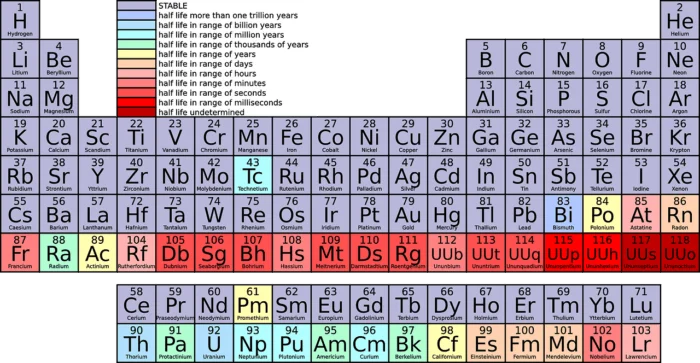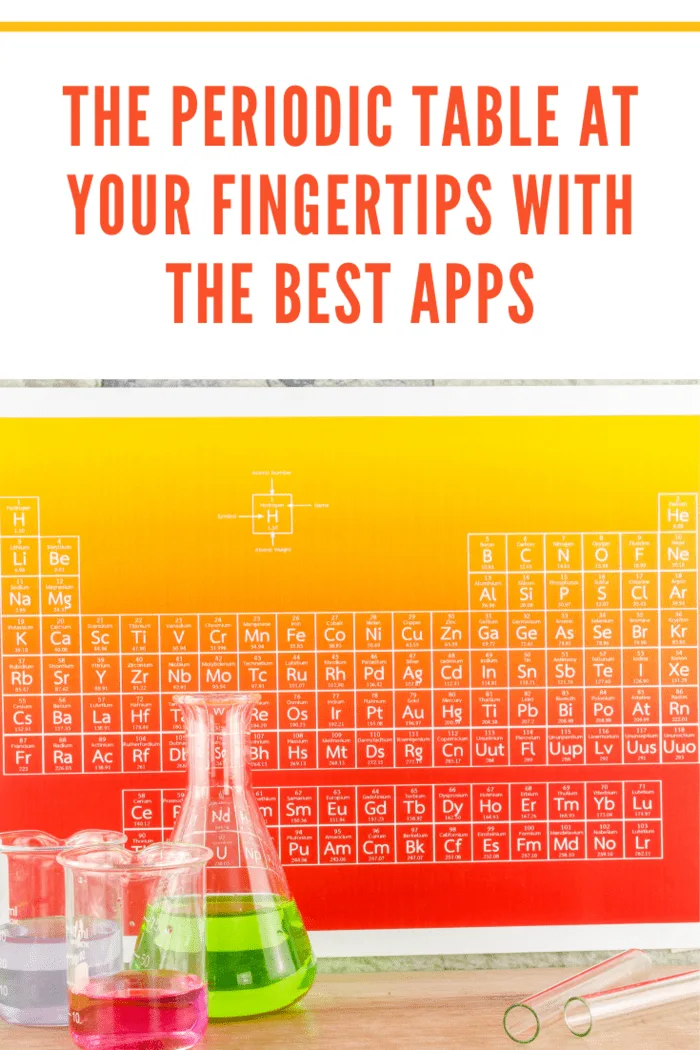Chemistry is truly a fascinating subject, but it can also be a bit overwhelming to study given the vast amount of information students are faced with. Some even got an O level Chemistry Notes to easily grasp the concept. While there are many types of chemical reactions and processes, the solution to virtually any chemical problem starts with the information contained in the periodic table.
Although I spent many hours trying to memorize the high school elements and values, I certainly don’t remember every detail.
As a result, I inevitably find myself looking back and forth at the periodic table when solving chemistry problems.
However, after solving more than a few problems, I realized that I needed to find an easier way to lookup information on the periodic table without Google it every time.
So, to save me some time, I decided to find the best apps with periodic tables, so I can quickly find the information I need.
That way, I could focus more on solving chemistry problems rather than on looking up element information over and over.
After searching through different sites, I came across a top 10 list of the best periodic table apps on AppGrooves.
Best 10 Apps for the Periodic Table of Elements by AppGrooves
I checked out some of the apps on their list, and I found a few that I particularly liked.
I tested most of them out and ended up with my personal top 3.

Periodic Table by Royal Society of Chemistry – Test your knowledge with a quiz.
My first pick is the Periodic Table by the Royal Society of Chemistry.
I found this to be a great choice if you want an easy and fun way to learn the periodic table.
For starters, I really like how the periodic table is dynamic and that you can use interactive sliders to see how elements change states with temperature or to graphically view how they compare in density, among other features.
I also l like how you can view detailed information on any element, including fun facts and videos, just by tapping on them.
Another plus I found is the quiz feature is you can customize the difficulty to fit your experience level.
While the variety of features is beneficial for finding a variety of information on any element, I sometimes found that it could be overcrowded.
Thankfully, you can manually select which features you want to turn on or off so that only the information you are interested in is displayed on the periodic table.

Periodic Table by August Software (Android) – More than just the periodic table
My second pick is the Periodic Table by August Software for Android.
I really like it because not only does it have a periodic table, but it also has a solubility table.
So, you can truly find any information you need to solve chemistry problems.
I also liked how you can view pictures of the elements and even visualize the electron shell configuration.
I also found it really helpful that you can view summarized information on polyaromatic carbons and alkaline properties, among other things.
I was also pleasantly surprised to see that the developers update the app frequently.
In fact, they seem to update information 2 to 3 times a month, so you can be sure the information will always be up-to-date.
The only drawback I found is that there isn’t a wide variety of information on every element built into the app.
Each element has a Wikipedia link on the upside, which you can tap on to find more information when you need it.
Quick Elements (iOS) – Customize your periodic table exactly as you want
My third pick is Quick Elements for iOS.
Like my previous pick, I liked that you can access a solubility table in addition to the periodic table.
I also thought that it was pretty neat that you can easily search through the elements by organizing them by number, name, or symbol.
Another neat feature I found is that you can view the periodic table in 4 different configurations, including by group, class, valence electron configuration, and orbital blocks.
Although I didn’t have any issues, I noticed that some users reported that there is a slight delay before a compatible app version is released for newer phone models.
On the upside, the app does run really smoothly, so it seems like the developers work hard to ensure it is running great before they release new updates.
So, these are my top 3 favorite periodic table apps.
My favorite is the Periodic Table by the Royal Society of Chemistry, as it truly has a vast amount of information.
Whether you are learning the periodic table for the first time or simply want to quickly reference it when you need it, any of these apps will do the trick.
With these periodic table apps at your fingertips, you can focus on what is more important; solving those chemistry problems!
Fun Periodic Table Facts:
The Periodic Table is more than something students learn in school. It is a universal guide for scientists all over the world. It is so important it even has its own day: National Periodic Table Day! And Brainly, the world’s largest online learning platform and homework help community, is sharing fun, interesting facts about the Periodic Table to celebrate!
>> Periodic Fact 1
- Where are the superhero fans at? Did you know that element No. 90 Thorium was named after the Norse God of Thunder Thor… and is now part of the Marvel-verse?! Try your hand at some Thorium trivia on Brainly!
>> Periodic Fact 2
- The Periodic Table was designed off its creator, Dmitri Mendeleyev’s, love of card games. He wrote each element on an index card and sorted them like a game of Solitaire. Do you know why he reorganized the Periodic Table?
>> Periodic Fact 3
- The country of Argentina is named after the periodic element silver (Ag). The Latin name for silver is argentum.
>> Periodic Fact 4
- In 1913, English Physicist Henry Moseley discovered the concept of sub-atomic particles by using X-rays to measure the wavelengths of elements. He then correlated those measurements with their atomic numbers and rearranged the periodic table using those atomic numbers instead of atomic masses.
>> Periodic Fact 5
- The Periodic Table is periodically revised by the International Union of Pure Applied Chemistry (IUPAC).
>> Periodic Fact 6
- The only letter that does not appear on the Periodic Table is “J.”
Resources:
https://www.bright-culture.com/download-free-o-level-chemistry-notes/
